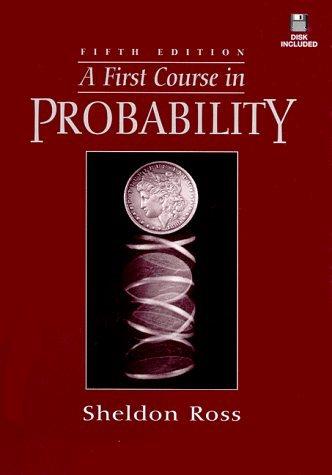31) Let X and Y be independent random variables that are both equally likely to be either...
Question:
31) Let X and Y be independent random variables that are both equally likely to be either 1, 2,..., (10)N, where N is very large. Let D denote the greatest common divisor of X and Y, and let Qk = P(D = k).
(a) Give a heuristic argument that Qk ≤
$$
\frac{1}{k^2}
$$
HINT: Note that in order for D to equal k, k must divide both X and Y and also X/k and Y/k must be relatively prime. (That is, they must have a greatest common divisor equal to 1.)
(b) Use part
(a) to show that Q1 = P(X and Y are relatively prime] =
$$
\frac{1}{\sum_{k=1}^{\infty} 1/k^2}
$$
It is a well-known identity that
$$
\sum_{k=1}^{\infty} 1/k^2 = π²/6
$$, so Q1 = 6/π2 (In number theory this is known as the Legendre theorem.)
(e) Now argue that
$$
Q_1 = \prod_{i=1}^{\infty} \left( \frac{P_i^2-1}{P_i^2} \right)
$$
where Pi is the ith smallest prime greater than 1.
HINT: X and Y will be relatively prime if they have no common prime factors.
Hence, from part (b), we see that
$$
\prod_{i=1}^{\infty} \left( \frac{P_i^2-1}{P_i^2} \right) = \frac{6}{π^2}
$$
which was noted without explanation in Problem 11 of Chapter 4.
relationship between this problem and Problem 11 of Chapter 4 is X and Y are relatively prime if XY has no multiple prime factors.)
Step by Step Answer:







